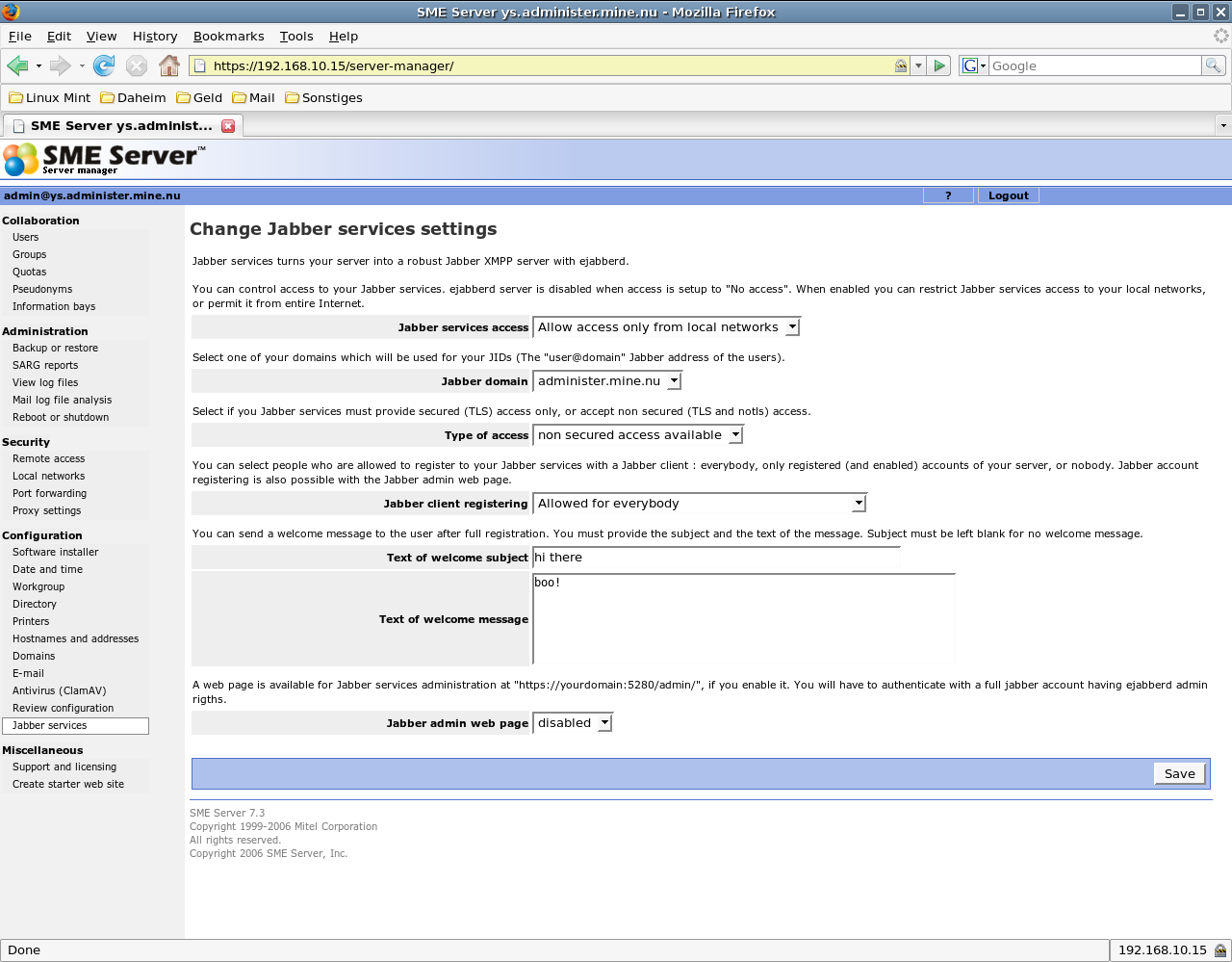YS Server Services
I tried making the XS (Bild 150) work (for me)
I failed.
There could be numerous reasons for my failure. And it really doesn't matter which one pushed me over the functionality edge.
Recently I came across a blog that impressed me (http://gilesbowkett.blogspot.com/2008/02/how-to-dodge-corporate-monkeys.html). I never bookmarked a blog before.Read this one. It's main postulate is: "Target low hanging fruit with superior technology".
So when I didn't understand how to make the XS work I thought maybe server technology / applications don't need to be reinvented. Why start from scratch?
Primarily I am targeting what the XS doesn't - schools with larger student population. If the active antennas can be included (later on?) great. But for a start I'd use what works out of the box. Why not take an existing distribution that allows for many times proven, easy to administrate setups of all the required components except for the XO support. One that provides a highly structured approach to implementing additional functionality?
My choice is CentOS SME (http://www.contribs.org) version 7.3 - that is the current one. Its the only distro so far that I could make do everything I needed. It is also red hat based. It doesn't come with an X server, but with a very good web interface. It's first priority is security. And the very next thing is administrability. Things can look like this:
 It provides for easy setup of:
It provides for easy setup of:
- Squid (I looked through the bug tracker and didn't find any memory leak issues),
- DansGuardian (this is the only minor draw back: The plug-in for the web-interface is commercial. But all administrative functionality of the command line is retained. The installation is really easy. And the administration is no worse than with the XS.),
- Moodle (just one or more instances - if you wanted to set up a mirror for several local schools, maybe in a community center)
- Ejabberd (this got me thinking for a while because it required working DNS and my test setup didn't do that right away.
Ok, I ran into a bit of a problem here. Once DNS was fine, ejabberd was fine, too. I could connect to it (pidgin client, xmpp protocol), but there was no menu item 'shared roster'. This must be connected to the patches the XS' ejabberd needs. I guess I'll need to find out how to apply these patches to my use case.
- many more things we don't need for a start (all kinds of statistics, content management systems, mysql (you guessed that when I mentioned moodle), samba, qmail, you name it...)
So these are 4 of the most important services of a working XS server and I don't have to reinvent anything. Just adapt. Maybe look more closely into ejabberds client handling / roster configuration. But I hope that combining the tutorials for the XS and CentOS SME will make for a working XO environment.
Why not try to create an 'XO contribution' for the CentOS SME server setup instead of inventing a whole new server?
The one big hurdle I see is providing for XO administration. Sub-hurdles would be
- registration - I hope that the rpm at http://xs-dev.laptop.org/xsrepos/testing/olpc/7/i386/idmgr-0.1.1-2.noarch.rpm will with only minor modifications do the trick
- back-up and restore of XO data - I believe that that has not been finalized with the current XS setup but I may be wrong
- OS restoration if the student really manages to break the system. If it means only providing any kind of image file, e.g. something.iso on a web accessible folder, that wouldn't be any issue. If it is some sort of PXE network boot to automatically restore the OS I am lost. Completely. I don't think network boots over wireless work though. For now ;-)
I am no server developer. I won't be able to create an automated install routine of the server elements once I have a working setup together. Scripts? I can read them with a dictionary ;-) I'll dilligently record the steps necessary to create a working server. Automation of the setup will take outside help.
Installation Steps (so far)
- The Basic CentOS SME Setup (includes Squid, Qmail, Clamv, MySQL, Web interface)
- The Contribs